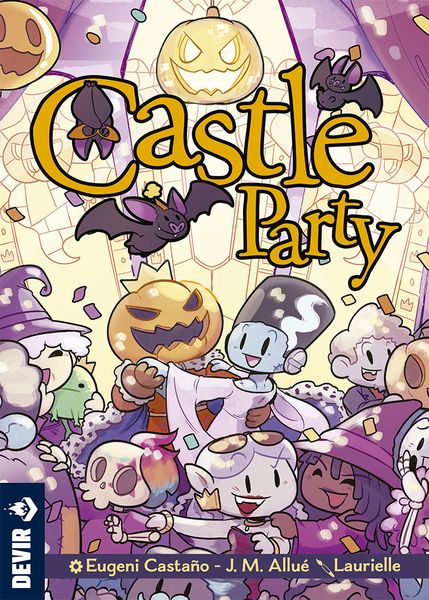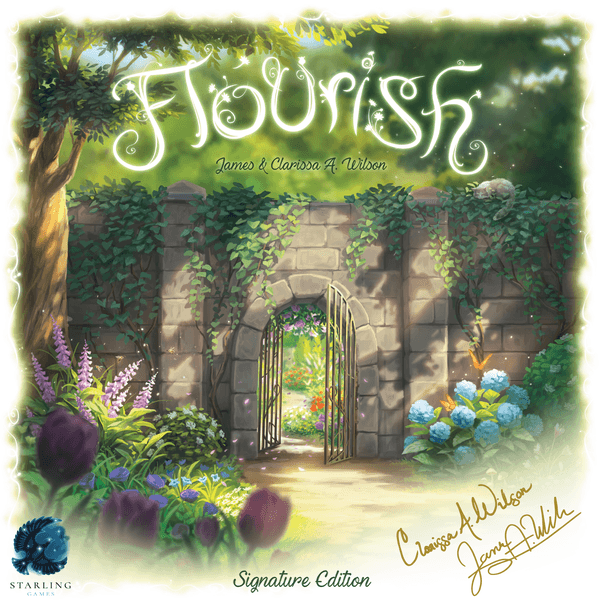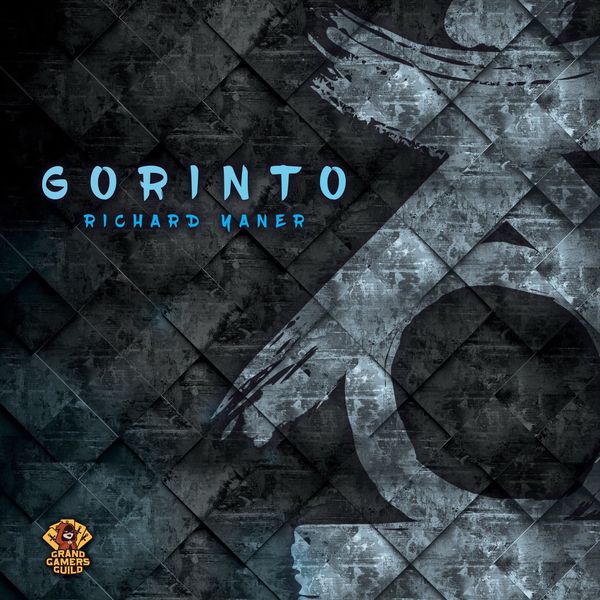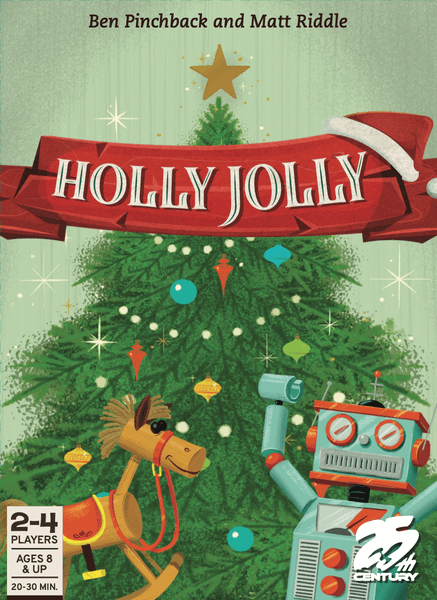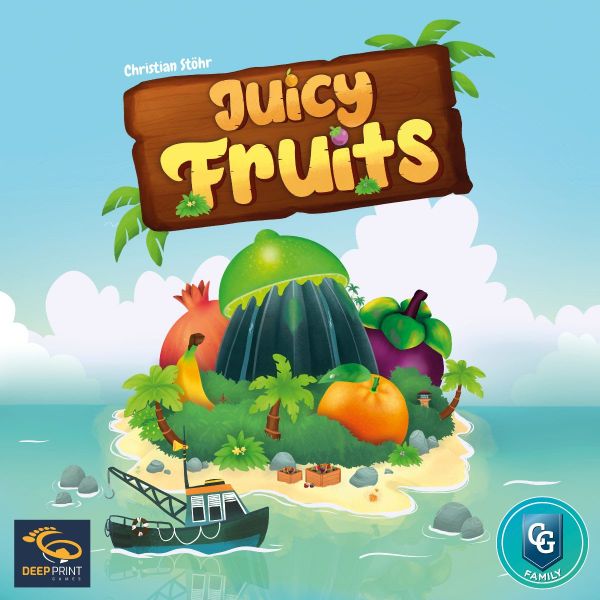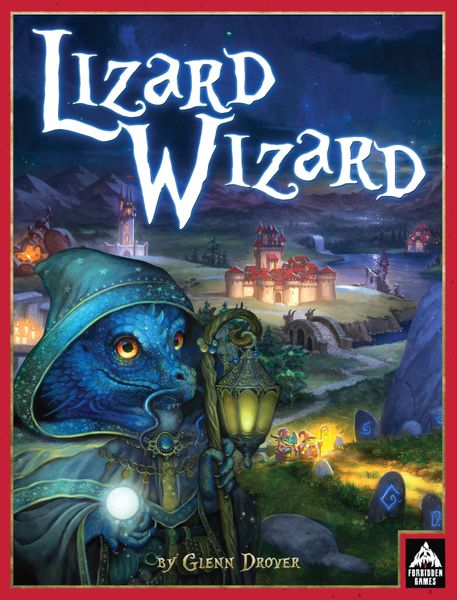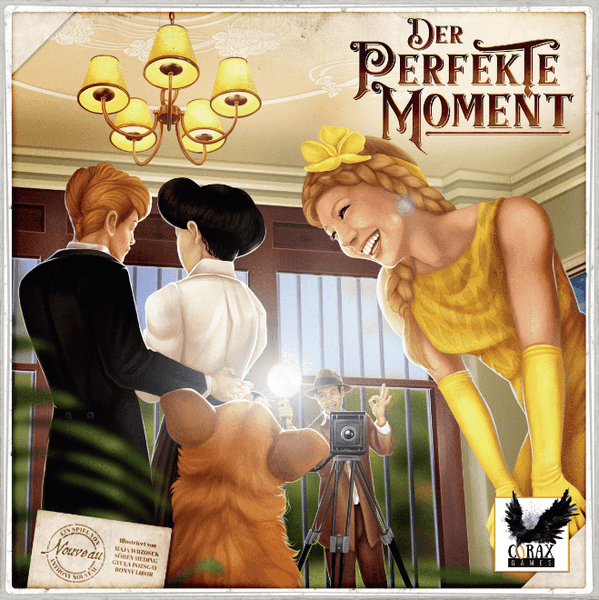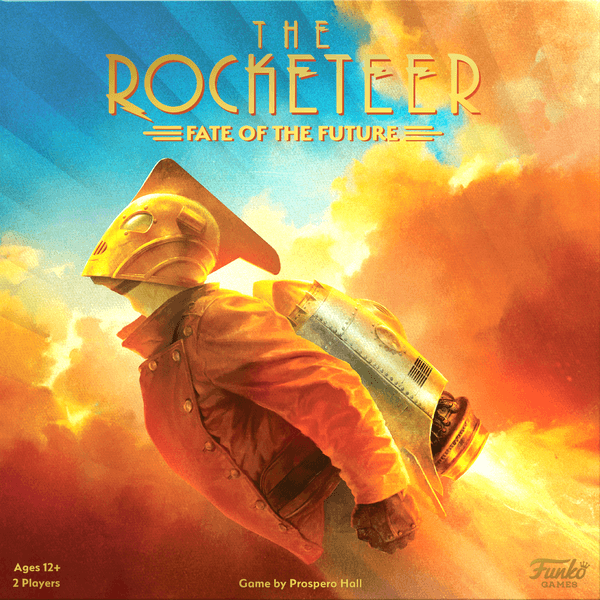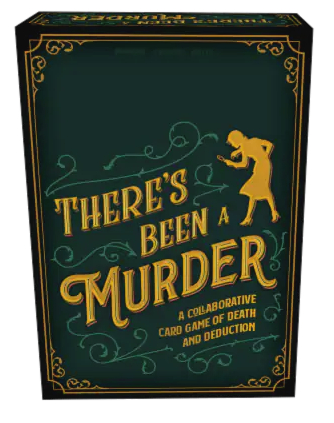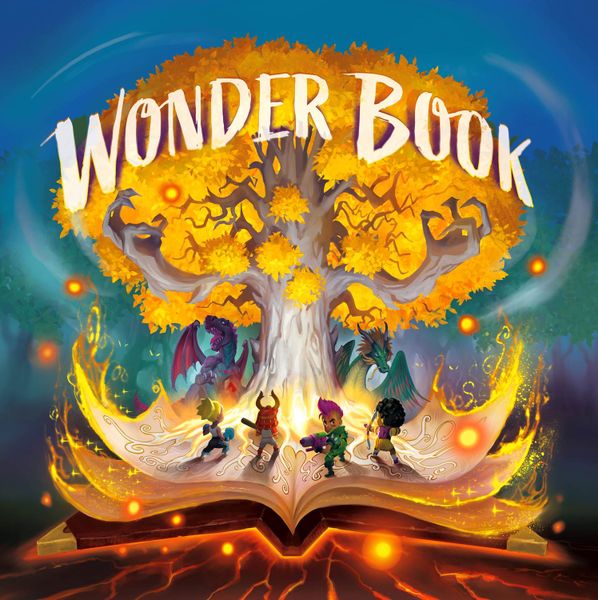When it comes to tabletop gaming, predicting any kind of market behavior is almost always a guessing game. No matter how much data you accumulate, how many experts you consult, or how much ad time you buy, humans are only predictable to a point. Gamers, doubly so. While there are certain fads and trends you can keep an eye out for, such as an uptick in a demand for solo gaming options (seriously, it’s seemingly everywhere these days) or a downturn in the deluge of roll-and-writes after the last few years, no one has the perspicacity to guarantee with absolute certainty exactly which games are going to become market hits and which are going to be forgotten as quickly as they’re released.
This is already true in a normal gaming year, with the volume of games released ensuring there will be more of the latter than the former. This is particularly even more self-evident in the pandemic era, where typical gaming preferences, gaming frequency, and even how people play games have all faced massive disruption and upheaval.
It isn’t a matter of quality – plenty of worthwhile games go overlooked while mediocre ones become super popular. Nor is it one of familiarity – otherwise crowdfunding would largely be without merit. (And as we saw in the last section, Kickstarter need not mean comparative obscurity anymore.) We can all make predictions on what we collectively think which games are going to resonate with the community writ large, but the truth is, at the end of the day it’s all just an educated guess.
Obviously there are factors that, when analyzed, merge into some safer predictions as to which games are going to be a decent seller or will generate industry buzz, but even those aren’t guaranteed. These games are better known as the New Hotness, the most hyped and sought after titles, and in our previous segment we looked at 15 games that had high degrees of interest and popularity going into Gen Con as well as how they measured up to that initial fervor.
Today, we are going to look at a handful of the opposite: games that weren’t showing up in every single preview list or pre-convention conversation but whose positive reception in Indianapolis reached levels that equaled (and in some cases surpassed) many of the most hyped games at the onset.
So join us in Part 4 of our Gen Con 2021 Recap: Surreal Edition as we look at the 10 most surprising hits with attendees during the Best Four Days in Gaming.
Also See:
- Part 1 – A Foreword: Conventioning During COVID
- Part 2 – Active Crowdfunding Projects
- Part 3 – The New Hotness
- Part 4 – The Surprise Hits
- Part 5 – News & Announcements
- Part 6 – What Comes Next
The Surprise Hits
Castle Party
Publisher: Devir Games | Players: 2-4 | Play Time: 30 Minutes
Walking around the expo hall at Gen Con 2021 was wildly different compared to the unprecedented spectacle of 2019. For one, you actually could walk around, even during peak activity. Additionally, there was a noticeable emphasis of publishers focusing almost entirely on current and soon-to-arrive titles over the typical balance of newness with some far-off 2022 Kickstarter.
Also, there were far, far fewer roll-and-writes.
This isn’t meant derisively. At Gen Con 2019 you could practically trip over publishers pitching their latest roll-and-write title, each attempting to capitalize on a wave of unbridled enthusiasm which had been on a massive upswing. This time around it felt like the fad had abated a bit. Given the previous levels, it was the only real possibility.
That’s not to say that these filler favorites weren’t still around or worthy of attention. The Halloween-themed Castle Party, for instance, which released at the convention, proved to be a fantastic sleeper hit with some enjoyable twists.
Castle Party, part of the “flip-and-write” subset of the genre, celebrates the autumnal ball of the Pumpkin King, who invites all the creatures of the land to his shindig. As expected, each turn a card is flipped over, depicting a polyomino shape you’ll need to fill in. However, before doing so players take turns playing monster cards in the size and shape of the polyomino depicted. It is that exact layout – including the card orientation based on your perspective – which you add to your board. Scoring revolves around trying to organize monsters into specific groups, all of which requires equal parts planning and flexibility.
Castle Party proved to be a graveyard smash early on and the party didn’t end till they sold out. And between the theme, in-game interaction, excellent artwork, and forgiving price point, it’s not hard to see why.
Flourish
Publisher: Starling Games | Players: 1-7 | Play Time: 20-60 Minutes
Of the numerous reasons people opted not to attend Gen Con this year, one of the more low-key and pragmatic reasons was of simple scheduling. Rather than taking place at its typical time of early August, this year came nearly six weeks later.
Well, Gen Con may still have taken place just a week before fall began, but a surprise hit title was positively brimming with a springtime air by midway through the convention. That was Flourish.
Flourish, the latest title from Starling Games and from the same designers as Everdell, launched via a Kickstarter almost exactly one year before the convention, with backers receiving the title fittingly around the start of spring. Yet while the campaign itself was pretty successful, it never quite broke through and caught the attention of many within the wider gamer populace when it went to retail earlier this summer.
At least, until Gen Con.
A straightforward and highly scalable card game, Flourish is about planting bucolic gardens. Over a scant 12 turns, each player simultaneously picks and adds a card from their hand to their tableau while passing several other cards to their adjacent opponents. The cleverness resides in the fact that the scoring potential of your cards is based as much about what your opponents add to their gardens as you do yours, forcing players to make savvy choices about which cards to play versus which to give away.
With a large booth outwardly framed like a country garden and plenty of tables within to demo, Starling came ready to show off what they felt was an overlooked summertime title. Given that playthroughs were consistent and copies disappeared faster than a lettuce patch full of rabbits, that notion apparently paid off.
Gorinto
Publisher: Grand Gamers Guild | Players: 1-4 | Play Time: 30-60 Minutes
Trying to gauge the relative appeal of any board game in a specific environment is rarely a slam dunk certainty. Exactly how well a game will be received, let alone sell, inevitably includes at least some bit of guesswork.
When it comes to abstract board games, that’s doubly true.
For every breakaway abstract like Mandala or Shobu or Azul that captivates audiences at a con, there’s many more that never have the same fate. Even with the subset of gamers who love them or those for whom theme is immaterial, abstract games have extra hurdles to jump through to resonate and be memorable in such an environment. For Gen Con 2021, Gorinto was that success story.
Gorinto is a game whose namesake and loose premise reference a Japanese Buddhist memorial shrine and its composition reflecting five distinct elements. Gameplay revolves around a central board comprised of randomized stacks of tiles belonging to one of those five elements. Over several rounds players add a single tile to the board and then remove others in a specific pattern – depending on which tile is used. Scoring is comprised not only of achieving goals each round but with endgame considerations as well – the combination of all these factors leading Gorinto to be a commendable brain-burning logic puzzler. Its colorful tiles and eye-catching vertical stacking doesn’t hurt either.
In a game about seeking perfect understanding, it’s pretty easy to grasp why abstract fans were drawn to this one.
Grand Gamers Guild had several new games at this year’s con, but Gorinto far and away got the most attention. Originally a Kickstarter, Gorinto only hit retail in June, but (and stop me if you’ve heard this before) due Gen Con being its first major event, it was the first real exposure in the wild.
Holly Jolly
Publisher: 25th Century Games | Players: 2-4 | Play Time: 20-30 Minutes
Ask someone what they feel is a go-to convention purchase and the game envisioned is apt to vary heavily from person to person based on their personal preferences. That could mean it’s a visually stunning masterpiece stacked with miniatures, a dense box chock full of cardboard bits and an intricately complex strategic puzzle, or something lightweight, highly replayable, and delightfully interactive. It’s all a matter of what personally excites you.
Personally, some of my favorite convention pickups are titles you might not be able to get again easily for a while – if ever. This tends to mean imports or games with small print runs. This year, however, a Gen Con grab I simply couldn’t pass up was a simple little holiday-themed card game.
And it turns out I was not alone.
Holly Jolly is a concise yet flavorful set collection jaunt, the latest in a string of adroit card games from designers Ben Pinchback and Matt Riddle (e.g. Subastral, Piepmatz). In this Christmas-centric instance, a series of numerically-value decoration cards are arranged in the form of a tree and players are given the choice of decorating by adding lights or tinsel. In turn, the resulting sum of the cards on the tree determines whether you collect an ornament or present, with the purpose of collecting card sets of varying types for points. The joy, of course, rests in making those minute decisions for an endgame payoff.
Whether to pick a copy up was likewise not a big decision. 25th Century Games had limited stock on hand and there was a slow but steady amount of interest in this holiday treat. Which was fortuitous to those who did – while they hope the main shipment arrives for the holiday season, if not, they’ll withhold it from retail distribution until Christmastime 2022.
Juicy Fruits
Publisher: Capstone Games | Players: 1-4 | Play Time: 30-60 Minutes
Capstone Games is known for publishing heavier Euro style games, either by bringing them to market directly or serving as a de facto distributor for overseas companies to ship in North America. It’s been a mainstay of their brand since the very beginning, and that focus has proven to be a very savvy business decision. Their successes clearly demonstrate a demand for heavier Euros, and their selection of curated titles has often been one hit after another.
The thing is, Capstone periodically points out much lighter fare, as evidenced by their highly successful reprint of the block-stacking game The Climbers and last year’s New York Zoo. For 2021, that was Juicy Fruits.
And no, gum doesn’t come with the game. It’s been asked.
Even with their penchant for weightier titles, the two games they showcased mostly at Gen Con were the aforementioned Iberian Gauge, and Juicy Fruits, an ingenious little tile sliding game where players are trying to become the most successful fruit magnates on their respective islands. Gaining fruit to sell consists of choosing that fruit’s tile and moving it across your gridded board. The further it moves, the more of that fruit you collect. Those fruits are used to fill shipping contracts lining the rim of your tropical paradise, which clear spaces and gain you succulent VP. Cleared spaces are valuable both for improving your fruit-gathering prowess, or as space to add powerful buildings, and it is that careful balance between the two that’s the game sweet spot.
I admittedly hadn’t heard of Juicy Fruits prior to Gen Con, despite it technically releasing sometime in July. But apparently neither did others, as despite the focus, Juicy Fruits started the con as a relative unknown but steadily grew in interest. Whether it continues to ripen afterwards remains to be seen.
Lizard Wizard
Publisher: Forbidden Games | Players: 1-5 | Play Time: 45-90 Minutes
I can’t say for certain this game was created solely just for the name, but if it were, let’s just say I would be zero percent surprised.
Because if nothing else, Lizard Wizard had to easily be the most entertaining title to say at Gen Con, and one of the more appreciably rhyming board game titles generally. Just try it. It’s fantastic.
Lizard Wizard.
Published by Forbidden Games, the same folks who created the similarly rhyming Raccoon Tycoon, the original plan was to primarily focus on just demoing their newest action selection game, as due to customs delays the main shipment to Kickstarter backers is only starting now. However, due to a stroke of magical luck there were a small allotment of advanced copies on hand for the convention.
It didn’t take incredibly long for those to disappear though; what they brought was gone by Saturday morning.
In the realm of Lizard Wizard, players are archmages trying to amass power (as they do) by building up loyalty from wizards of the realm, each belonging to one of seven different schools of magic. This is accomplished through a variety of action choices, including researching spells, exploring dungeons, recruiting wizards and familiars, and erecting mystical towers. The more towers, spells, and wizards you can control of the same schools by the game’s end, the better your chances at the whole “ruling the world” thing you’re so keen on.
With much of the same mechanical framework, notable artwork, and approachable-yet-strategic gameplay as Racoon Tycoon, Lizard Wizard feels familiar enough to easily jump in but adds enough new twists to the recipe to conjure up an entirely different experience. Given that what copies they had slowly but steadily vanished, clearly it’s a formula that was working.
Lizard Wizard.
Picture Perfect
Publisher: Arcane Wonders | Players: 2-4 | Play Time: 45-90 Minutes
Game designers come up with amazingly creative ideas. Ideas framed around wildly esoteric stories, utilize all manner of tactile and aesthetic choices, or create an experience that truly can be as unique as they are groundbreaking. Sometimes it can be a gimmick, sure, but that’s not necessarily a problem.
And yet, even in the era of democratized game publishing, most games inevitably still have to contend with practical and mundane reality of trying to turn those ideas into a salable game. Artisanal print runs aside, turning a hand-made prototype into something mass produced almost always ends up with the same dilemma: either it’s not capable of getting made on a large scale, or there will be concessions.
Which is one of the reasons why board games often improve through iteration more than something coming entirely out of left field.
Enter Picture Perfect.
Picture Perfect is an affable and straightforward information deduction game about a group of people in a room. Instead of a whodunnit, in this lighthearted case players have the much more genial task of trying to get everyone in the room in the right positions (based on their demands and quirks) to take a photo. Throughout the game, players secretly rearrange their rooms and trade information with one another before, finally…actually taking a photo with your phone. Then you compare photos to see who was the most accurate in their tasks.
It’s not a deep idea, but it is original and refreshingly droll. Picture Perfect definitely struck a chord with audiences, as it ended up quietly becoming Arcane Wonder’s second most popular title there. Which I appreciated, as I enjoy seeing innovation rewarded. And it was: a reprint of a 2020 German crowdfunded game, Picture Perfect sold out ahead of a planned November release.
The Rocketeer: Fate of the Future
Publisher: Funko Games | Players: 2 | Play Time: 45 Minutes
Although the game division itself is only a few years old, Funko Games is a known quantity at this point. The design group Prospero Hall, makers of titles like Horrified, Villainous, PanAm, and the Funkoverse series – just to name a few – are also pretty well known. So it feels very strange to say one of the sleeper hits of Gen Con 2021 was by way of these two entities.
But here we are. Because that’s precisely what happened with the release of the asymmetric head-to-head title The Rocketeer.
Prospero Hall particularly enjoys using interesting licenses in their games, and the choosing of the 90’s cult hit Disney movie The Rocketeer in retrospect seems obviously in their wheelhouse – especially when you consider the other Funko games on display included summertime releases based around The Goonies and Fast & The Furious, as well as the unveiling of an upcoming Q1 release based another cult movie classic, The Warriors.
The choice clearly paid off, for despite little fanfare going into the convention, this card game took off, well, like a rocket.
The thrust of the game is pretty simple, as you’re playing out the plot of the 1930’s era movie. One player is the mysterious Rocketeer and his allies, while the other controls the villains led by Neville Sinclair and his German spy cohorts. Over a set number of turns players activate characters, take various actions, and try to control different locations for bonuses and endgame points. At the heart of it all is a shell game: trying to possess the blueprints for the jetpack. All of which leads to a taut 30ish minute game full of feints and tactical choices.
Luckily, while the game may have appeared at Gen Con, it quickly flew into game stores only a couple weeks later.
There’s Been A Murder
Publisher: Goliath Games | Players: 3-8 | Play Time: 5-20 Minutes
Part of the appeal in watching for sleepers at a convention is seeing a game’s appeal evolve organically via demos, onlookers, and good old fashioned word-of-mouth. It’s genuinely fun for a deserving game flying under the radar or coming out of nowhere get rapt attention as time goes on.
Without a doubt, There’s Been A Murder fits the definition of under the radar. This social deduction game contains just 24 cards. It had almost zero mention going into Gen Con. It barely has a BGG listing. Yet for Goliath Games and their predilection towards lightweight, engaging games, this tiny title of murder afoot was easily the runaway favorite.
Worthwhile games don’t need to have a giant footprint. Just take a look at Werewolf, Coup, or Love Letter, the lattermost of which this game quickly drew some comparisons to.
In this short and simple card game, a murder has taken place at a rural English country house (as they so often do, apparently). Everyone playing is a suspect, but there is no active enemy as the game is fully cooperative. However, for decorum purposes, no one wishes to openly discuss the matter. Thus, you cannot talk about your cards and must instead deduce the killer’s location.
At any given time, each person has just two cards and takes turns playing one. These cards provide various effects, but the main objective is to get someone holding the Detective and Murderer cards at the same time. On the other hand, should the Murderer meet up with the Witness…well it’d be impolite to elaborate.
Super fast, elegantly simple, and an easy pickup for many, There’s Been A Murder definitely picked a good time to make an impression heading into its release later this month.
Wonder Book
Publisher: dv Giochi | Players: 1-4 | Play Time: 60-90 Minutes
I have mixed feelings about pop-up books. On the one hand, they’re visually interesting to look at and can do some pretty impressive things. Pop-up books can spark the imagination and capture attention in ways a straightforward illustration sometimes can’t. That said, while fun, they’re also impractical. The more complex the popups, the more fragile it is to handle and store. Plus, once the newness wears off you inevitably begin to wonder what you should do with them.
Pop-up book games solve a lot of those quandaries by adding an entirely new layer of engagement and interaction. Wonder Book is the newest title with that approach.
While comparatively rare, Wonder Book is not the first game with pop-up components, but it is assuredly the most ambitious I’ve seen in terms of scope and size. Italian publisher dV Giochi is banking on the prospects of doing multiple Wonder Book titles – presuming interest in the first catches on. Given how many people were popping in at the con to check it out ahead of a release later this fall, they may be in for some good news.
Indeed, for a game that’s essentially a pop-up book and a deck of cards, Wonder Book certainly folds in a surprising amount of gameplay.
Wonder Book is a cooperative family-weight game that centers around a group of teenage heroes using the arcane Wonder Book tome to adventure through a magical dragon-centric realm. Over the span of six goal-driven scenarios, players proceed through a story by exploring their environment, fighting monsters, and solving various challenges. Each chapter alters the board’s popup features and layout in ways that are as creative as they are commendable from a production standpoint.
We’d like to say more, but as with any pop-up, it’s best to explore them yourself.
That’s all for now! Check back for the next segment when we talk about the (albeit few) bits of major gaming and industry news that broke around or at Gen Con.

